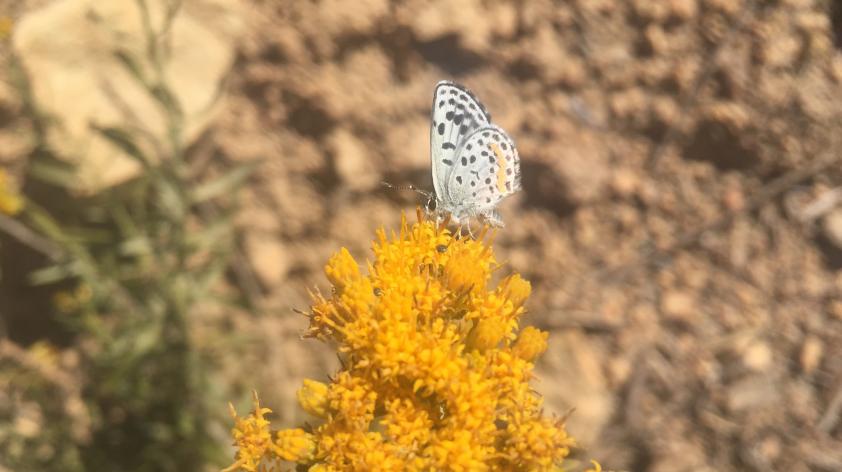
A WebApp for Exploring the Pollinator Networks that Sustain Rare Plant Species
Plant-pollinator interactions are vital to the survival of both natural and agricultural ecosystems.
The majority of plant species, including one-third of the plants we eat, rely solely on pollinators for reproduction. For an example of conservation importance of pollinators, look no further than Brighamnia insignis, which is featured in San Diego Zoo’s Hawaiian Native Plants Garden. Also known as cabbage-on-a-stick, B. insignis lost its native hawk moth pollinators and now relies on hand pollination by humans to ensure it can produce seed for future generations.
To help other rare plants avoid the fate of cabbage-on-a-stick, Center for Plant Conservation received funding from the National Fish and Wildlife Foundation to compile the Pollinators of Rare Plants Database. While many pollinator data resources exist, most were created to help citizens create pollinator gardens from common plant species and contain few observations specific to rare plants. Thanks to the literature resources of the San Diego Zoo library, Joe Davitt from the Plant Conservation Division and volunteers from San Diego Zoo were able to transcribe over 14,000 plant-pollinator observations encompassing over 2000 plant taxa and 2000 pollinators into on web based database available for public download on the Center for Plant Conservation Website.
Ensuring conservation value of this resource requires more effort than simply compiling data and granting access to the public. On top of providing the raw data, we must convey how the data base can be useful. To illustrate the utility of the database, 2017 Plant Conservation Summer Fellow, Kara Powell, created a web app, which provides a set of tools that allow users to interact with and visualize the pollinator data. Kara built this app, using the Shiny platform in R, an open source programming software.
The most eye-catching tool in the app is the Pollinator Network Search, which generates an interactive network of plants and pollinators associated with an organism selected by the user from the literature observations in the database. This tool allows users to compare the diversity of pollinator types among plant groups. For example, plants in the genus Magnolia are pollinated primarily by beetles whereas Abronia species are frequently visited by a range of pollinators including bees, butterflies, flies, and moths. Through the Pollinator Network Search, users can also visualize the immense connectedness of plants and animals. There are often hundreds of plant and pollinator species within one degree of separation of a given focal organism. Displaying these species as a interdependent web is a powerful way to communicate the importance of pollinator network in saving species.
Other features of the web app relate to specific conservation actions. The Common Pollinator Garden tool generates a list of plants that share one or more pollinators in common with a focal plant. Conservationists may use this tool to assess if pollinator limitation could affect a rare plant population based on the plants present at a given site. Furthermore, this tool could help gauge the suitability of a proposed site for reintroduction of a rare plant species based on the present vegetative community.
Web apps such as this one can be applied to countless conservation problems. Interactive tools help conservation experts make decisions and allow the public to become more informed about animals, plants, and conservation efforts. We hope that our app will inspire and educate researchers and citizen scientists alike, encouraging them to become more involved in pollinator network conservation.













